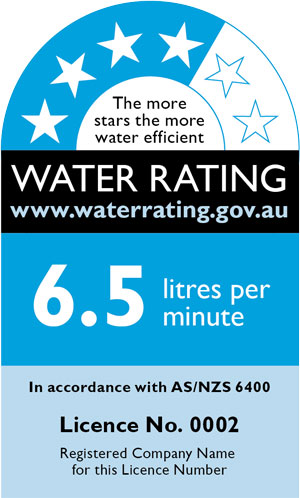Water charging fact sheet
Lessors are allowed to pass on the full water consumption charges (including bulk water charges) to tenants provided all the minimum criteria have been met.
Under a general tenancy agreement, tenants can only be charged for all water consumption if the following conditions are met:
- the property is individually metered (or water is delivered by vehicle)
- the property is water efficient
- the tenancy agreement states the tenant must pay for water consumption
- the property manager/owner provides the tenant with a copy of the water consumption bill within 4 weeks of receiving it from the service provider.
The tenant cannot be charged more than the billable amount.
A tenant has 4 weeks to pay a water bill after they receive it from the property manager/owner.
Items a tenant can be charged
A tenant can be charged the following items if the above criteria are met:
| Charge as shown on water bill | Can the tenant be charged? |
|---|---|
| State bulk water charge | Yes |
| Water usage charges | Yes |
| Sewerage usage charge (may appear on the bill as fixed or variable) | No Sewerage is not a service charge as defined by the RTRA Act and cannot be passed on to the tenant. |
| Fixed access charges (including water access charge and sewerage access charge) | No The property manager/owner must pay all fixed charges for water supply. |
What is a water efficient property?
A property is considered water efficient if certain water fixtures meet these standards:
| Water efficient devices | Minimum standard |
|---|---|
| Internal cold water taps and single mixer taps | A maximum flow rate of 9-litres per minute |
| Showerheads | A maximum flow rate of 9-litres per minute |
| Toilets | A dual flush function not exceeding 6.5-litres on full flush and 3.5-litres on half flush, and a maximum average flush volume of 4-litres (based on the average of one full flush and 4 half flushes). |
Internal cold water taps installed over a hand basin, kitchen sink or laundry trough (including single mixer taps) must be water efficient.
Other taps don't need to be water efficient to meet the requirement. This includes bathtub taps, outdoor taps for the garden, or taps that supply washing machines, dishwashers and other appliances.
Proving water efficiency
It’s a good idea for property managers/owners to demonstrate water efficiency by keeping copies of:
- plumbing reports (or compliance certification)
- receipts
- packaging
- warranties or instruction manuals for taps and showerheads.
For water fixtures produced from 2005 onwards, look for products with a Water Efficiency Labelling and Standards (WELS) rating of 3 stars or higher.
WELS is Australia’s water efficiency labelling scheme. It rates water fixtures according to water efficiency – the more stars the better. To find out more or to search the WELS product database, visit waterrating.gov.au.

What if the property is not water efficient?
If the property is not water efficient, the property manager/owner must pay for a 'reasonable amount' of water consumption, and the tenant may be required to pay excess water charges. This only applies where the property is individually metered and the agreement states the tenant must pay for water.
The term ‘reasonable amount’ is not defined under the Residential Tenancies and Rooming Accommodation Act 2008 (the Act). The property manager/owner and tenant should agree on what is a reasonable amount and include the amount as a special term in the tenancy agreement.
Passing bills on to tenants
A tenant has 4 weeks to pay a water bill after they receive it from the property manager/owner.
If the tenant/resident is required to pay for water consumption, the property manager/owner must provide a copy of the water bill within 4 weeks of receiving it from the service provider. The tenant/resident does not have to pay the bill if the property manager/owner fails to provide a copy within this timeframe.
This applies to general tenancy agreements, moveable dwellings with individually metered utilities, and rooming accommodation agreements where the resident pays for utilities services.
It does not apply to service charges or utilities services that are included in the rent.
Water sub-metering
Multi-residential properties (like apartment buildings) may use sub-meters to measure how much water each residence is using.
Depending on the property, water sub-meters may be read by the service provider or property manager/owner. This affects how the water bill is passed on to the tenant/resident:
- If a residence has a sub-meter that’s read by the service provider, the water charges can be passed on to the tenant/resident as outlined above.
- If a residence has a sub-meter that’s read by the property manager/owner, the water charges must be passed on to the tenant/resident within 4 weeks of receiving the original bill from the service provider.
It’s the responsibility of the property manager/owner to read sub-meters and pass the bill on to the tenant/resident within this timeframe. The tenant/resident does not have to pay for the water charges if the property manager/owner fails to pass the bill on within the timeframe.
Partial billing periods
Partial billing refers to a billing period that includes only part of the time covered by the water bill. For example, if a tenancy agreement starts on 1 February, but the water billing period is 1 January to 31 March, the partial billing period would be from 1 February to 31 March.
A tenant pays for water during a partial billing period if the following conditions are met:
- the property is individually metered
- the property meets water efficiency standards
- a meter reading is recorded in either the entry or exit condition report
- the partial billing period starts when the rental agreement begins
- the amount owed is calculated based on a reasonable estimate of a tenant's water consumption using the meter reading from the entry or exit report
- the rate used for calculation is the current rate stated in the water consumption charges document
Water charging for moveable dwelling and rooming accommodation agreements
Under moveable dwelling and rooming accommodation agreements, tenants/residents can only be charged for all water consumption if the following conditions are met:
- the premises is individually metered
- the agreement states the tenant/resident must pay for water consumption
- the property manager/owner provides the tenant/resident with a copy of the water consumption bill within 4 weeks of receiving it from the service provider.
Partial billing for moveable dwelling and rooming accommodation agreements
The Act does not address partial billing for moveable dwellings and rooming accommodation agreements. Property managers/owners may wish to adopt the same approach that's used for general tenancy agreements to prevent potential issues during and at the end of a tenancy.
Concealed water leaks
Property owners who have a large water bill due to a concealed leak may be eligible for financial relief from their service provider or the Queensland Government. If you think you have a concealed water leak, contact a licensed plumber and your service provider. Additional support or a leak remission scheme may be available in your area.
More information
For more information on water charging and passing bills on to tenants/residents, you can contact the RTA.
The Commonwealth of Australia, as represented by the Department of Climate Change, Energy, the Environment and Water, owns the copyright for the WELS label. © Commonwealth of Australia 2022.

